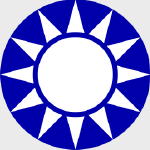Hobby Master HA8802 Captured Chinese Air Force Mitsubishi P-5016 Fighter - (c/n 3372, V-172), 1942-1943 (1:48 Scale)
"We become what we do."
- Chinese President Chiang Kai-Shek
 The Mitsubishi A6M Zero was a light-weight carrier-based fighter aircraft employed by the Imperial Japanese Navy Air Service from 1940 to 1945.
The Mitsubishi A6M Zero was a light-weight carrier-based fighter aircraft employed by the Imperial Japanese Navy Air Service from 1940 to 1945.
It is universally known as Zero from its Japanese Navy designation, Type 0 Carrier Fighter (Rei shiki Kanjo sentoki), taken from the last digit of the Imperial year 2600 (1940), when it entered service. In Japan it was unofficially referred to as both Rei-sen and Zero-sen. The official Allied code name was Zeke (Hamp for the A6M3 model 32 variant); while this was in keeping with standard practice of giving boys' names to fighters, it is not definitively known if this was chosen for its similarity to "Zero".
Pictured here is a 1:48 scale replica of a captured Imperial Japanese Navy Mitsubishi A6M2B "Zero" fighter that was used by the Chinese Air Force.
Sold Out!
Dimensions:
Wingspan: 9-inches
Length: 7-1/4-inches
Release Date: April 2018
Historical Account: "Chinese Take Out" - While the USSR provided most of the military aircraft to Chiang Kai-shek in the late 1930s, many early Chinese aircraft were supplied by the American Curtiss Aeroplane and Motor Company. In 1937, the Hawk II and Hawk III biplanes comprised the backbone of Chinese fighter aviation. These were soon followed by the Hawk 75 monoplane. The demonstration model Hawk 75N, with non-retractable landing gear was purchased in 1938 and became the personal aircraft of the American advisor to the Aviation Committee, Claire Chennault who oversaw training and lobbied for the procurement of American aircraft.
The entry of the USA into the war with Japan at the end of 1941 led to the receipt of Lend-Lease equipment from the United States, including aircraft. American Lend-Lease aviation equipment had already begun to arrive in China as early as the middle of 1941, though that includes the first shipments before January 1942 which arrived under the guise of purchases. Including previously purchased American aircraft, US soon replaced USSR as the largest supplier for the Chinese Nationalist air force during the war (Including the Second Sino-Japanese War that actually broke out in 1931 when Japan invaded Manchuria). The US aircraft supplied to China in its struggle against the Japanese invaders included: A-12, A-17, A-19, A-29, B-10, B-17, B-24, B-25, B-29, C-19, C-43, C-45, C-46, C-47, C-100 (Gamma 2E light bomber version), Curtiss F11C Goshawk, P-12, P-26, P-36, P-38, P-40, P-43, P-47, P-51, P-61, P-66, and PB4Y.
Retraining on American aircraft occurred for the most part in India. (Karachi and other cities), where Chinese pilots were sent both as groups and as entire units. As early as the end of 1941 Chinese pilots, mainly recently graduated from flight schools, began to be sent to the USA for longer training and mastery of American aircraft.


